Better Breathing
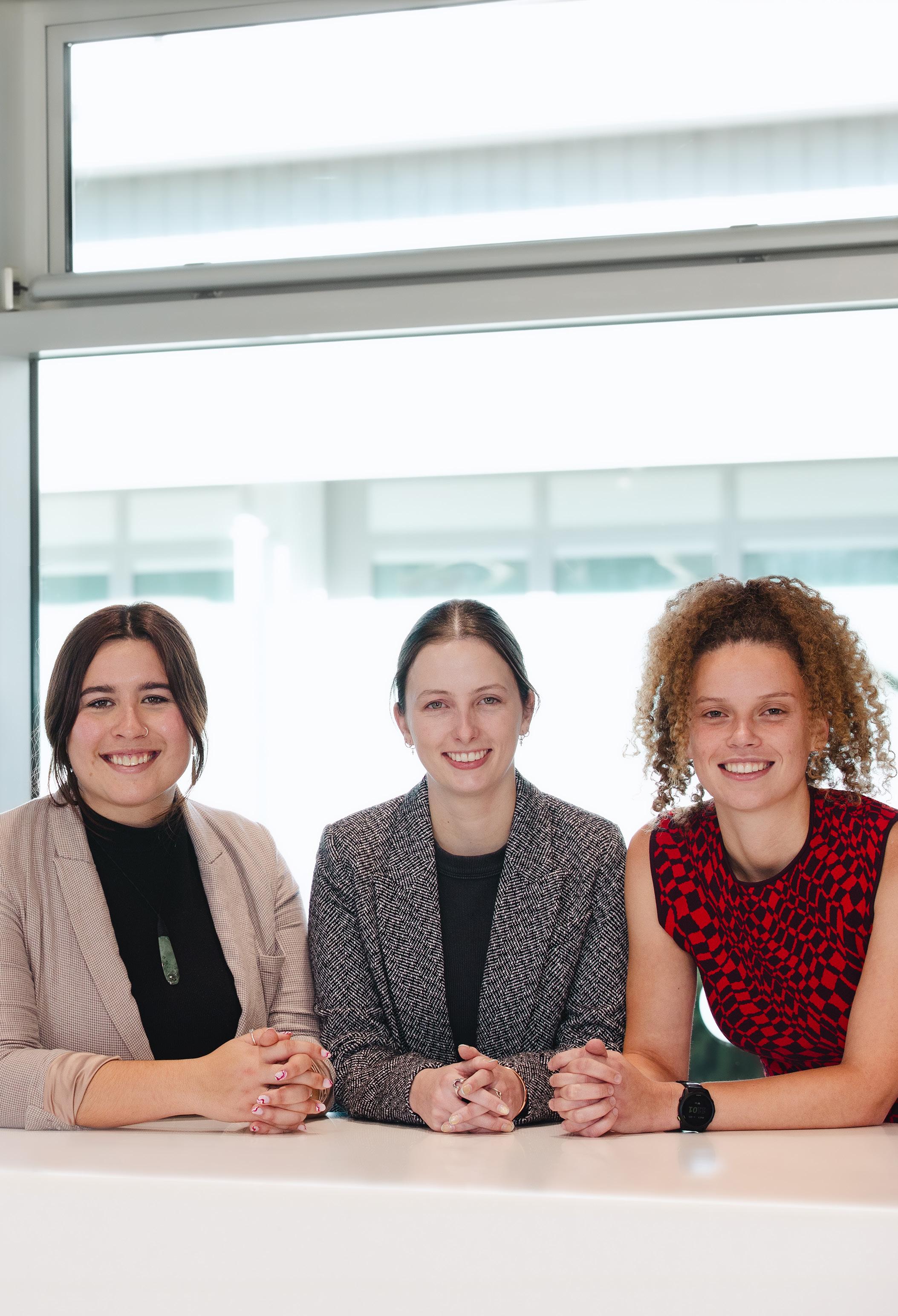
SUPPORTING OUR RANGATAHI THROUGH THEIR QUIT VAPING JOURNEY
CELEBRATING NEW ZEALAND
OCCUPATIONAL RESPIRATORY DISEASE
What you can do to protect yourself at work
SAVE LIVES THIS WORLD ASTHMA DAY
Help us upskill health professionals for free

Autumn Edition 2024
WOMEN IN SCIENCE
OUR TEAM CONTENTS
Chief Executive
Letitia Harding
Deputy Chief Executive, Education & Development Manager
Joanna Turner
Office and Donor Appeal Administrator
Christina Goss
Grants & Fundraising Executive
Pam Francombe
PR & Comms Marketing Manager
Chloe Bradwell
Marketing & Communications Advisor
Sam Treseder
Māori Community Liaison
Sharon Pihema
Community Liaison
Youth Vape Educator
Penelope Joyce
Corporate Sponsorship & Engagement Advisor
Amy-Rose Todd
Marketing Coordinator
Jack Perris
Medical Director
Dr James Fingleton, BM, PhD, FRACP
Chief Cultural Advisor – Māori
Sir John Clarke, KNZM, CNZM
Letitia's Message
Poster Competition Winners
Asthma Societies
World Asthma Day 2024
Hero: Nick Ashill - Perth to Sydney
Women in Science
Vaping Guidelines
DVS supporting Josh vs Asthma
Hero: Adam Faatz - Mt. Kilimanjaro
Occupational Respiratory Disease

Thank you to our Friends of the Foundation partners for supporting our ongoing initiatives.

You can also read this magazine online Just head to issuu.com /betterbreathing Please recycle this material after use. This material has been printed with vegetable oil-based/mineral-free inks. The paper used comes from sustainable forests.
NZRC 2023 Wrap-Up 3 4 4 5 6 8 10 11 11 12 14 Level 2, 85 The Terrace, Wellington 6011 PO Box 1459, Wellington 6140
499 4592 asthmafoundation.org.nz asthmaandrespiratoryfoundation asthmaandrespiratoryfoundation
04
Letitia’s Message

We hope everyone enjoyed some summer relaxation time and got to spend it with friends and whānau across the country.
For the Foundation, it is always a busy time as children head back to school. The 'back-to-school’ spike in asthma hospitalisations is even greater than the 'winter effect' when it comes to children's respiratory disease. Hospitalisations from asthma attacks are at their highest during weeks three and four of Term 1. A variety of factors are associated with this peak, including a change of environment, exposure to different allergens, changes in emotions (such as stress or anxiety), and exposure to more viruses from being around more people.
More than 350,000 school days are estimated to be lost each year due to asthma-related symptoms in children. This is why it is so important that your child has an asthma action plan and that you talk to the school about what asthma policies they have in place. You can download the Child Asthma Action Plan for free under the 'Resources' page on the Foundation's website. The Foundation ran a ‘Back to School’ poster competiton this year. You can read more about the competition and view the winning entry on page 4.
We are so excited to have our wonderful ambassador Nick Ashill embark on another epic run for charity. Nick will be running across Australia this April to raise awareness of respiratory diseases such as asthma, chronic obstructive pulmonary disease (COPD) and idiopathic pulmonary fibrosis (IPF). To read more about this amazing feat, check out page 11.
Advances in science and research is pivotal to better understand and manage long-term chronic illnesses such as asthma and COPD. Which is why we are happy to celebrate four talented scientists in our ‘Women in Science’ feature on page 8. Research is a hard vocation to follow in New Zealand, and it is hoped that by showcasing what these women do will inspire other women into science, and shine a light on how interesting and lifechanging research can be.
Of course, this magazine wouldn’t be complete without a full feature on the New Zealand Respiratory Conference held last November at Te Papa in Wellington. This must have been our most successful conference yet, from the calibre of speakers and our attendees, to the number of exhibitors and sponsors who supported us. We wish to thank each one of you for all your mahi and time. Also, a special thank you to the Foundation's Deputy Chief Executive, and Education and Development Manager, Joanna Turner, for all the extra effort she put in behind-the-scenes. You can see photos from the conference on page 14.
It was also at this conference that we launched the first New Zealand guidelines to support youth to quit vaping. Te Hā Ora - Asthma and Respiratory Foundation New Zealand Reference Guide to Support Rangatahi to Quit Vaping is aimed at helping health professionals who work with adolescents and young adults (AYA) to tackle vaping and e-cigarette addiction.
It is now well documented that around 1 in 5 (20 per cent) of high school students are regular vapers and that currently smoking cessation services in New Zealand are funded only to support those over 16-years-old wanting to stop or reduce their cigarette smoking.
It is hoped that these guidelines will assist health professionals and whānau to support adolescents, who are now dependent on vapes to become nicotine-free. You can read more about the guidelines and where to access them on page 12.
Remember, we also run vaping educational workshops in schools, with our lead Āpiha Takawaenga (Māori Community Liaison), Sharon Pihema, and we are also pleased to announce that we have just welcomed our first dedicated Tāmaki-Makarau Youth Vaping Educator, Penelope Joyce. Please contact Sharon if you know of a kura/school who needs one of these workshops - they are so informative and really take on board the voice of our youth to make a change. You can contact Sharon at info@dontgetsuckedin.co.nz.
Remember, the Foundation receives no government funding, so all our work is made possible by the generous support from our community funding groups, our donor family, our Friend of the Foundation sponsors and New Zealanders who share our goal of improving respiratory health in Aotearoa. The money we raise goes into our essential work providing resources, education, and advocacy on behalf of the 700,000 Kiwis with respiratory conditions.
Noho ora mai, Letitia

Better Breathing 3
Letitia Harding, Asthma and Respiratory Foundation Chief Executive
Community News
Hospitalisations from asthma attacks are at their highest during weeks 3 and 4 of Term 1, so we asked tamariki around New Zealand to create a poster that shows common asthma triggers. We had some fantastic entries and it was hard to choose a winner. Thank you to all those who entered!
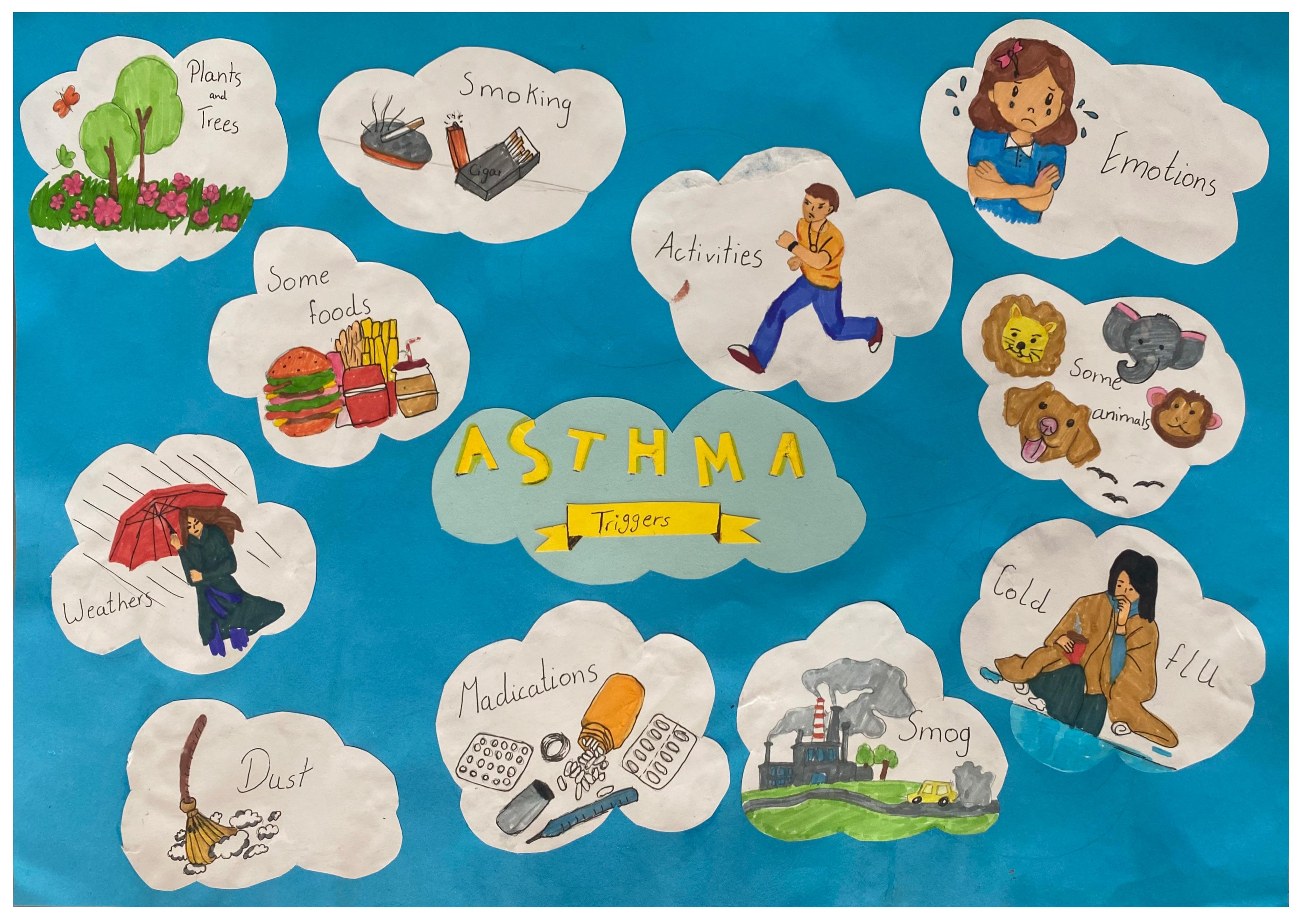
Winner: Fatima Zahra
You have won $1000 for your school to go towards sports equipment, art supplies, library books, or a new outdoor project. Sailor the Pufferfish will also be visiting to perform a live asthma education show. Congratulations!


supported by

Runner Up: Mishika Chawla
You have won a $150 art supplies voucher for your classroom. Congratulations!

Support Groups
Wellington SYLO Choir
Tuesdays 10.30am 027 817 1136
All Saints Church, 90 Hamiltons Road, Haitaitai
Manawatu Breathe Easy 06 3587491 owenped@xtra.co.nz
your local
ASTHMA SOCIETY
Is your support group missing? Let us know: info@arfnz.org.nz
Asthma NZ - Auckland
Monday-Friday, 9am-5pm
09 623 0236 0800 227 328
anz@asthma.org.nz
581 Mt Eden Road, Auckland
Otago Asthma Society
Monday-Friday, 9am-12pm 03 471 6167, 027 471 6160 otagoasthma@xtra.co.nz
Dunedin Community House, 1st Floor, Cnr Moray and Great King Street, Dunedin 9016
Tu Kotahi Māori Asthma Trust
Monday-Friday, 8.30am-5pm 04 939 4629 / 0800 939 462 anne@kokiri-hauora.org.nz
7-9 Barnes St, Seaview, Lower Hutt 5010
Nelson Asthma Society
Monday, Tuesday, Wednesday and Friday, 9am-2pm 03 544 1562
asthma.nelson@xtra.co.nz
9 Cambridge Street, Richmond, Nelson 7020
Horowhenua Breathe Easy Support Group 06 368 8069 iandlmckenzie@xtra.co.nz
9 Kilsby Place, Levin 5510
Marlborough COPD Support and Exercise Group
Contact Gillian McCloy 027 454 5102
Asthma NZ - Wellington
Monday-Friday, 9am-5pm 04 237 4520
wellington@asthma.org.nz
Level 2, 120 Featherston Street, Wellington 6011 www.asthma.org.nz
Asthma Waikato
Monday-Friday, 9am-4pm 07 838 0851
info@asthmawaikato.org.nz
18 Claudelands Road, Hamilton East, Hamilton
CanBreathe Canterbury
Monday-Friday, 9am-4pm 03 386 0278
office@canbreathe.org.nz 196 Hills Road, Edgeware, Christchurch 8013 www.canbreathe.org.nz
Eastern BOP Asthma and COPD Support Group
07 307 1447 or 0800 227 363 copd@drct.co.nz
C/O Karen Couchman, Disabilities Resource Centre Trust, 141 King Street, Whakatane 3120
Porirua SYLO Choir
Thursdays 11.30 - 12.30pm 027 405 6458
Supper Room, Mungavin Hall, Mungavin Avenue, Ranui, Porirua
Asthma and Respiratory Management BOP Inc
Monday-Friday, 9am-4pm
07 577 6738
0800 ARM BOP or 0800 276 267
reception@asthmabop.org.nz
254 Chadwick Rd, Gate Pa, Tauranga 3112
Breathe Hawke’s Bay
Monday-Friday, 8.30am-3pm 06 835 0018
admin@breathehb.co.nz
199 Dickens Street, Napier www.breathehb.co.nz
Asthma NZ - Rotorua
Monday-Friday, 9am-5pm 07 347 1012
rotorua@asthma.org.nz
1290 Eruera Street, Rotorua 3010
4 Better Breathing

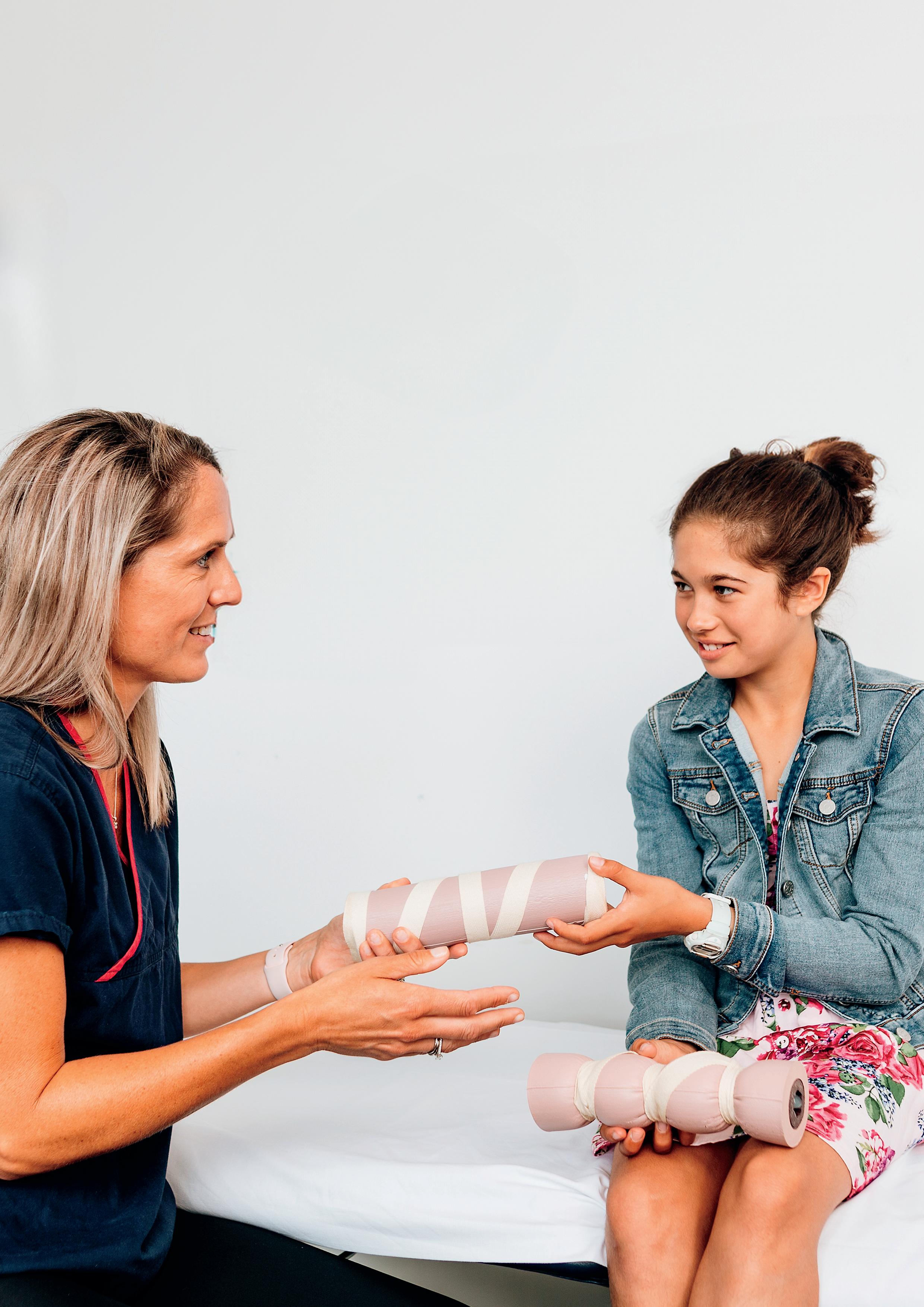

TUESDAY 7 MARCH DONATE AND GO IN THE DRAW TO WIN PRIZES SAVE A
SAVE A LIFE THIS WORLD THIS WORLD ASTHMA DAY ASTHMA DAY e v e r y $ 1 3 5 d o n a t e d w i l l p u t a n u r s e t h r o u g h a c o u r s e p r o v i d i n g c r u c i a l u p d a t e s a b o u t a s t h m a a n d C O P D m a n a g e m e n t find out more at worldasthmaday org nz
WORLD ASTHMA DAY
LIFE
Nick Ashill From Perth to Bondi

A Wellington ultra-runner is attempting to become one of just five people to run across America and Australia in their lifetime.
Nick Ashill is planning to run almost 4000km across Australia in April, to raise money for the Asthma and Respiratory Foundation NZ.
Ashill says despite having arthritis in his knees and hips, and titanium rods and screws in his right leg and pelvis, he is more motivated than ever to complete this run.
“Every step I take in April, May and June will symbolise the everyday struggles and challenges faced by those living with a respiratory condition.
“Yes, I want to prove to myself that I can complete another cross country run, but, more importantly, I want people to know about the cause I am running for.”
Ashill's run across Australia comes nearly seven years after he was left for dead in a ditch following an incident during a charity run across the United States. It was on day 81, when Ashill was struck by a vehicle in what appeared to be a deliberate hit and run.
After a long and arduous recovery, he returned to the US in mid-2022 to the scene of the hit-and
run to finish the 5400km run that ended so abruptly.
On April 15, Ashill will start his journey at Cottesloe Beach in Perth and will finish at Bondi Beach in Sydney. He estimates it will take him about 70 days.
“I am not an elite runner. I am just an ordinary person wanting to do something extraordinary.
“Running 5400km across the US was not conventional - Australia will be no different, but what drives me is a yearning to help others living with respiratory disease,” he says.
“The memory of my mum and the fight she endured every day to breathe is a constant reminder of the importance of the Foundation’s work.”
Ashill lost his mother to the rare lung disease, idiopathic pulmonary fibrosis (IPF), in 2015. IPF affects about 3 million people worldwide.
Ashill's run is supported by Friends of the Foundation Silver partner, Comfortech.


support Nick's incredible effort, visit www.nickrunsaustralia.org.nz
To
Nick Ashill (centre) during his 2023 'Laps for Lungs' campaign
At Comfortech® our ambition is to create a more sustainable and comfortable future by enabling all Kiwis to live and work in warmer, healthier and more energyefficient buildings.
We’re meeting this commitment with our new Pink® Superbatts® range which have been designed specifically to meet the new H1 building code changes for insulation.
To find out more about our vision for better performing New Zealand homes, visit our H1 Hub at comfortech.co.nz


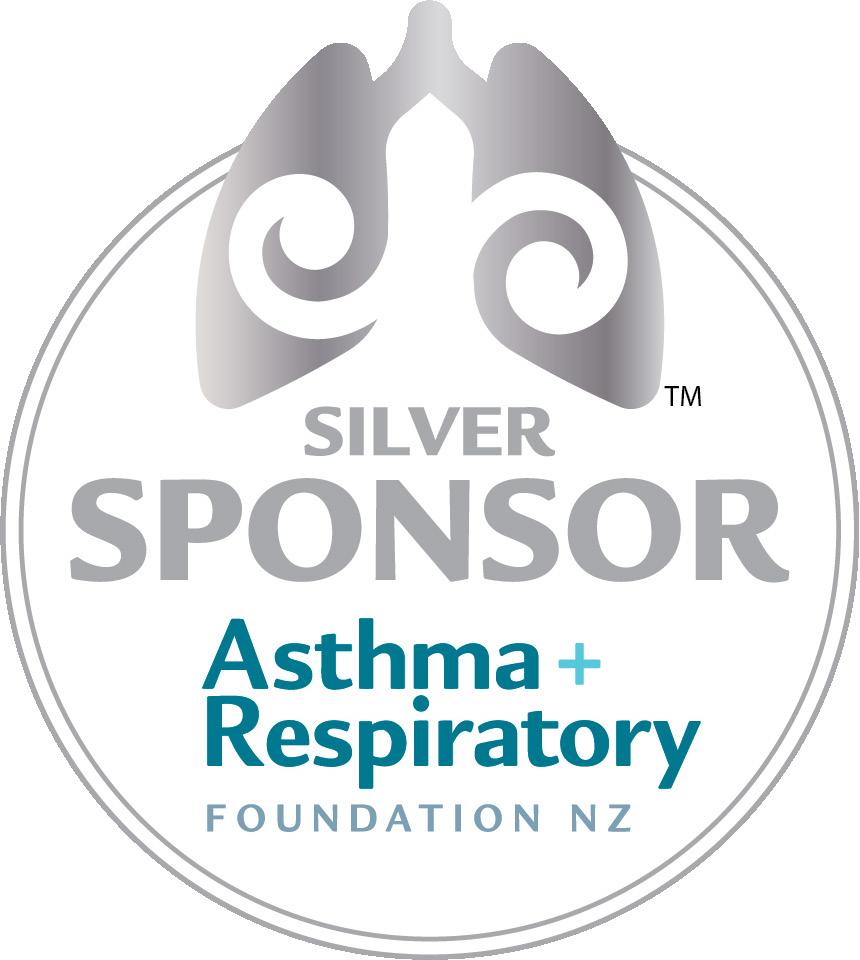
Better Breathing 7
Our pink® Superbatts® are at least 25mm wider than our standard Pink®Batts® ceiling range.
H1 insulation solutions today, for a more comfortable tomorrow.
CELEBRATING NEW ZEALAND

WOMEN IN SCIENCE


‘I’m Māori and I’m a woman’ - that’s what motivates Trudy Calje-Van Der Klei to strive for success in the field of engineering. By sharing her story, she also hopes to inspire a new generation of wāhine and people of colour.
Trudy’s career began at space camp in America at the age of 15. She became inspired after reading about a woman who attended one and had all these incredible plans for her future.
One thing led to another and now Trudy is completing a PhD, hoping to better predict how a person’s lungs react to different levels of ventilation.
“There is a lot of complexity there and not a lot of understanding. The issue is that it is very generalised how we ventilate people – and while it works for the majority of the population, it doesn’t work for everyone, and it can lead to ventilator-induced lung injuries.”
Trudy’s goal is, essentially, to help people – both clinicians and patients.
“I want to bridge a gap and make people’s lives even just a little bit easier.”
Trudy is encouraging others to join her and her colleagues in the field of STEM (science, technology, engineering, and math).
“For young kids to see others who look like them out there being engineers, scientists and researchers, can have a huge impact on their outlook towards careers in STEM. I know this because I was lucky enough to have a strong wahine in my life to watch as I was growing up –my mum."
“I simply hope to have the opportunity to also inspire the way I have been by many incredible wāhine."
Engineering is not just cars and motors and engines. That’s the message Jaimey Clifton wants to share with young women trying to decide their career path. Take it from her – she’s now working to help pregnant women with sleeping issues get more (and safer) rest.


Sleep apnoea, often associated with snoring, is a dangerous lung condition where a person will unknowingly stop and start breathing in their sleep.
Currently, in New Zealand, there is very minimal data on sleep apneoa in pregnancy. The best data available is a small study in America which revealed that up to 27% of women (by their third trimester) could have sleep apneoa.
So, Jaimey is working hard to, firstly, get some accurate data in New Zealand, then, secondly, find non-invasive solutions (like using an app) to help control this condition.
“My biggest dream would be to create impactful solutions that can be used to solve real world problems."
Jaimey’s decision to study engineering came from her love of problem solving in a creative way, she says.
“I thought, growing up, that engineering was just cars and motors and engines, but it’s actually a lot more about creativity and problem-solving.”
Jaimey hopes to encourage other women to follow their passion and not fear trying something new.
“It did take a bit for me to think ‘Oh, I could do engineering’, so don’t give up and give it a go.”
8 Better Breathing

To celebrate 2024 International Women in Science Day, the Foundation spoke with four inspiring Kiwi women who are working in respiratory research and technology.
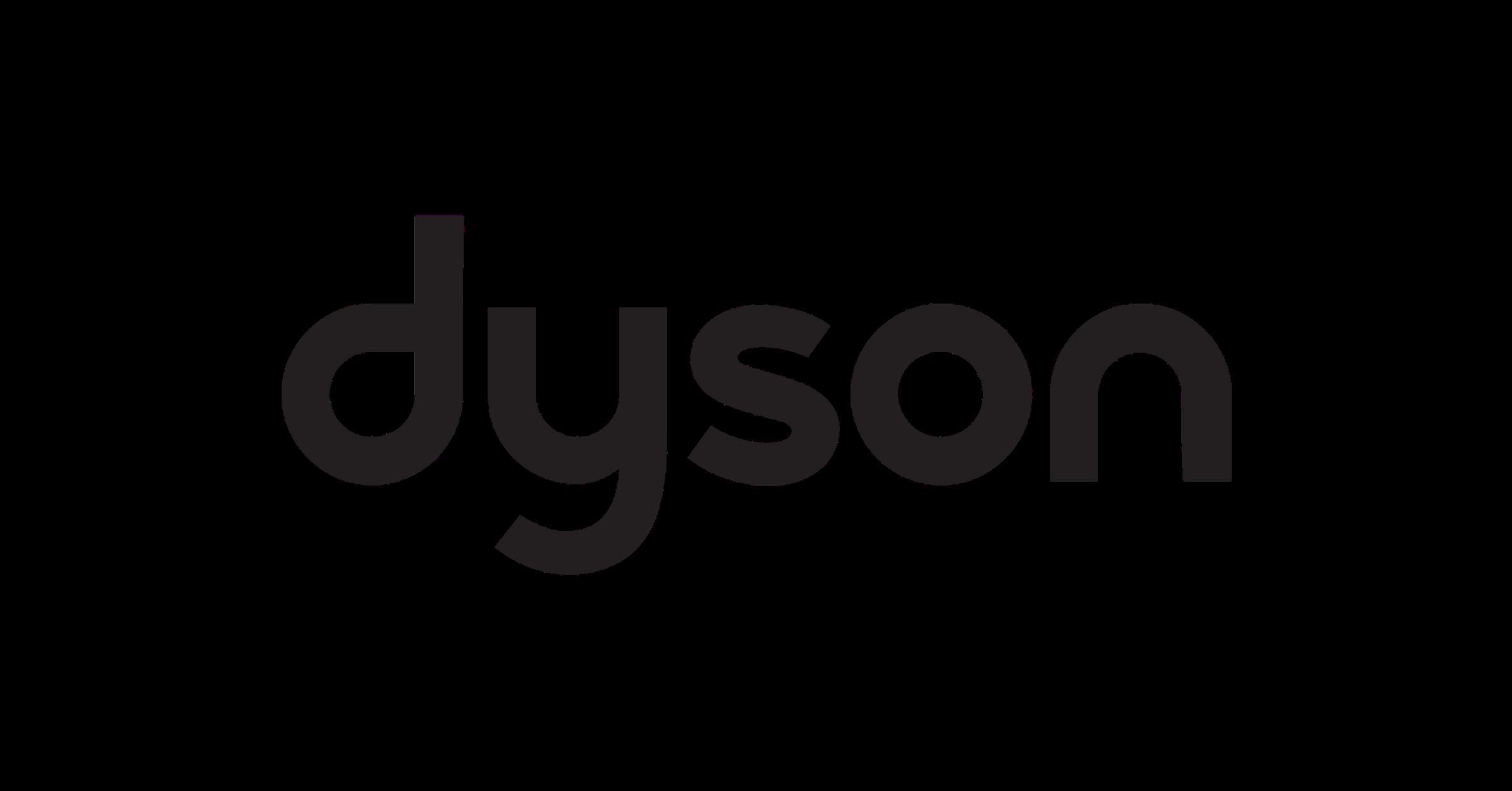
Ellie Byerley spent her childhood building garden furniture with her dad, now she’s working on the latest products for Dyson – from haircare to vacuum cleaners.

Ellie was born in NZ, but grew up in the UK. She’s always loved problem-solving, which is why she chose to dive into the world of engineering.
“Some of my favourite childhood memories are building garden furniture with my dad, which led me to want to continue with something practical in my adult life. So I always wanted to do something that would help people, but I realised quickly that I wouldn’t make a good doctor.”
After studying engineering at the University of Bath, she secured a position as Graduate Ergonomic and Human Factors Engineer at Dyson where she applies her knowledge of the human body and mind to make products more user-friendly.
Ellie recalls being one of very few women on her university course. “The hardest part about university and school was coping with others saying how easy they found things that you found difficult.
“It took me a long time to shift my mindset and understand that I was just as capable as them, and that I was just better at admitting when I’d struggled,” she says. “I think this is quite a big theme in women and we end up believing we’re not good enough.”
She hopes to see more women around the table when talking about design and engineering in years to come.
Living rurally in New Zealand shouldn’t be a barrier to accessing adequate healthcare. That’s why Ella Guy is working to change this by developing a device to record respiratory data which can then be used by doctors to create more accurate at-home patient care plans.
Ella's PhD focusses on respiratory data collection for communities with limited access to specialist care.
“Currently, you can only get infrequent data from people who live in communities far from a doctor or specialist," she says.
“That data comes only when they visit a doctor and get tested, which gives a snapshot in time. That one visit could be a good day or a bad day – either way, there isn’t enough information, so it won’t give the best data for doctors to evaluate and make decisions about long-term care.”
Ella’s ultimate goal is to tackle health literacy, she says.
“I believe that the increasing burden our healthcare system is under demands attention and focus in order


to ensure people are afforded equitable access to services, and healthcare workers are provided with the right information and tools to do their job confidently.”
Ella’s passion lies in the digitisation of healthcare, which stemmed from her time in a Ugandan hospital where she witnessed the many compromises involved in healthcare - especially in places with limitations to access.
Engineering was not something Ella thought she would be interested in, but after realising that engineering involved both technical and creative problem-solving, Ella knew she’d found her career.
“For me, engineering comes down to challenging things – why do we do something a certain way, or why not? I like to challenge why we do things and how we can make improvements. Ultimately, it’s quite fun.”
Better Breathing 9
Our Women In Science Day was proudly supported by our Friends of the Foundation Gold Partner
Supporting our rangatahi on their quit vaping journey
The first New Zealand guidelines to support youth to quit vaping have been developed by the Asthma and Respiratory Foundation NZ.

A reference guide: To support rangatahi to quit vaping –published last November – is aimed at helping health professionals who work with adolescents and young adults (AYA) to tackle vaping and e-cigarette addiction.
Chief Executive Ms Letitia Harding says the decision to develop these guidelines stemmed from the lack of support currently available for younger generations.
“We have been advocating for a long time for dedicated support services to help our young people quit vaping.”
It is widely documented that around 1 in 5 (20%) of high school students are now regular vapers.
Yet, currently, smoking cessation services in New Zealand are funded only to support those over 16 years old wanting to stop or reduce their cigarette smoking.
“It's our hope that these guidelines will assist health professionals to support AYA, who are now dependent on vapes, to become nicotinefree.” Ms Harding says.
The guidelines are a 'living document', which can be added to as new information becomes available, she says.
Foundation Āpiha Takawaenga Māori (Māori Community Liaison) Sharon Pihema says the lack of support services has been a major obstacle for rangatahi wanting to quit vaping.
“Our rangatahi and their whānau have been trying to get help from Quitline and their GPs, but with no funding allocated, they get no support.
"It's almost as if they need to start smoking so they can get help to quit vaping.
Ms Pihema hopes these guidelines will remove those barriers.
“They need one-on-one support, a plan, and ongoing follow-up to make sure they can successfully quit vaping and lead healthier lives."
The guidelines are available to download from the Foundation’s website as well as the dedicated vaping website Don’t Get Sucked In.
To date, the guidelines have been downloaded 464 times.
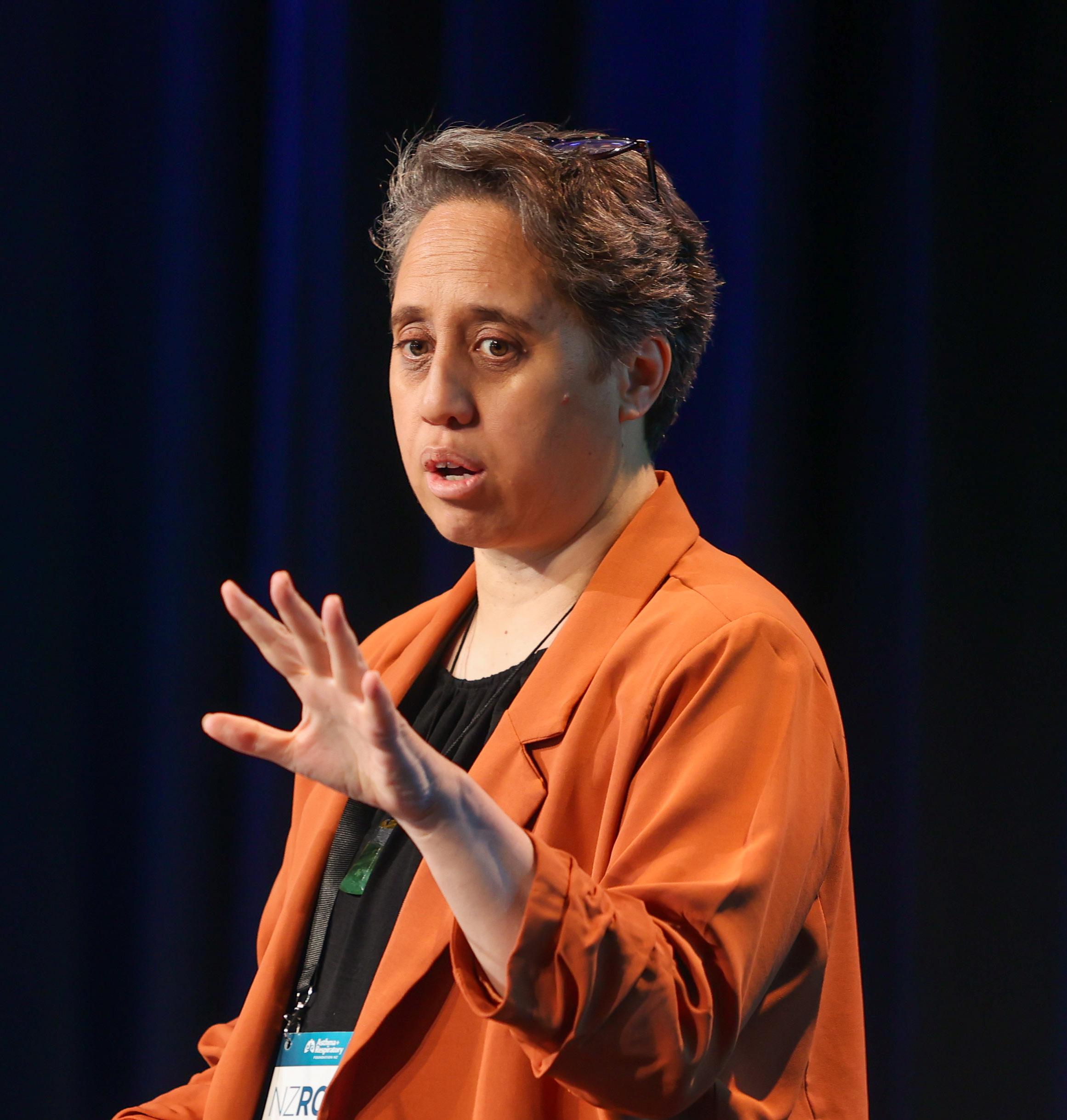
10 Better Breathing
The reference guide was published and distributed to attendees of the 2023 New Zealand Respiratory Conference in November.
The Foundation's Māori Community Liaison, Sharon Pihema, presenting the reference guide at the NZRC 2023.
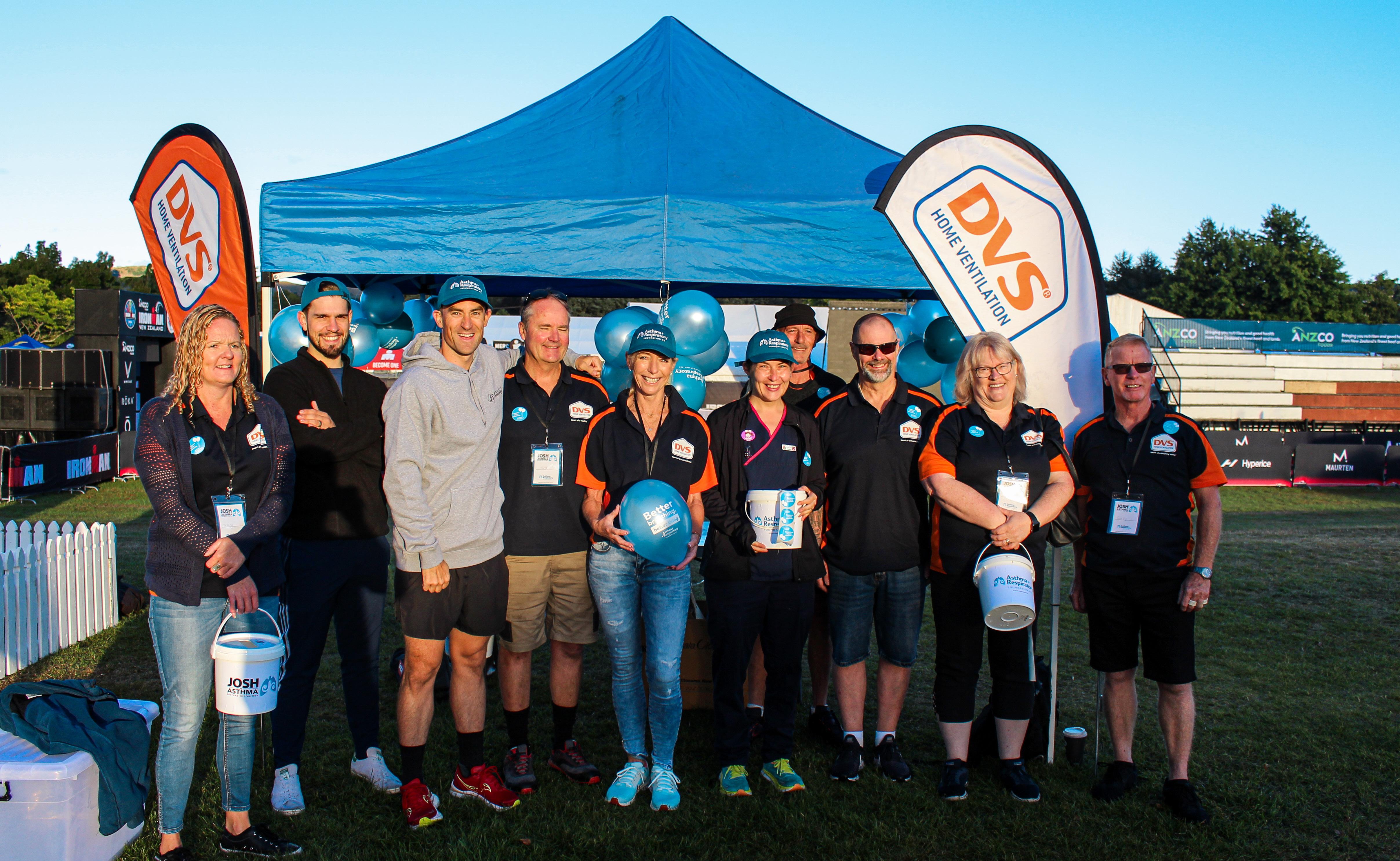

DVS back Josh vs Asthma
A chilly Taupō morning did not stop the DVS team from coming out in full force to support Josh Brodie for his pre-Ironman ‘Undie Run’.
The New Zealand home ventilation provider supported Josh on his journey to becoming an Ironman and raising awareness of asthma along the way.
On March 2, 35-year-old Josh – who was no stranger to A&E as a child living with asthma – completed a 4km swim, 180km bike ride, and a 42km marathon run in an attempt to raise $50,000 for the Asthma and Respiratory Foundation NZ.
DVS, who are a Gold Sponsor of the Asthma and Respiratory Foundation’s Friends of the Foundation programme, were proud to support Josh on his mission.
Their support extended to installing a DVS system in his house in Wellington, where he lives with his wife and their 2-year-old daughter.
Josh is concerned his daughter may develop asthma, and is doing everything he can to create a healthy home environment.
“Since we’ve had our DVS system installed, we have seen a remarkable difference in condensation.
“The air feels cleaner and it really does feel like you are breathing better air.”
Josh was incredibly grateful for their generosity and ongoing support in his journey to complete a full Ironman.
DVS Managing Director Tony Sandes says they were thrilled to be supporting Josh.
“Josh’s drive to create awareness and education around respiratory disease is inspiring and aligns with our desire too.
“Our company has always had a passion to create healthier homes for Kiwis which is essential for promoting better health.”
A ventilation system can reduce exposure to triggers and, subsequently, symptoms.
Common triggers of asthma in the home include excess moisture, condensation, dust mites, mould, and mildew.
Better Breathing 11
Josh Brodie and the DVS team at the 'Undie Run', two days before the Taupō Ironman.

He lost four toe nails, bled through his boots, dislocated his knee, and thought his one-andonly lung was going to collapse, but Adam Faatz made it.
He made it to the summit of the world's tallest free-standing mountain – Mt Kilimanjaro.
The former army soldier, with barely one functioning lung due to ipiopathic pulmonary fibrosis (IPF), successfully scaled the African mountain in January to raise money for charity, and awareness of respiratory diseases that kill hundreds of thousands of people.
“It was one of the hardest things that I’ve ever done in my life,” Faatz says of the 19,341-foot mountain climb.
Faatz says the most difficult leg of the hike came as he left the campsite at 15,250 feet — a height that is one and a quarter times that of Mt Cook — to make his last push toward the summit, known as Uhuru Peak.
He departed in the middle of the night on day eight, reaching the mountaintop at sunrise.
That's when “everything finally came together” and he felt a great sense of accomplishment.
Adam Faatz
The one-lung man who completed his mission
“The feeling was almost indescribable. To do something no one else has ever done – it was so overwhelming.”
Faatz is referring to the world record he now holds, being the first person with IPF to successfully climb Mt Kilimanjaro.
He describes the descent as “the worst thing I’ve ever experienced”.
He got terrible altitude sickness, in addition to losing four toe nails and dislocating his knee. He was forced to descend quickly as his oxygen levels were worryingly low.
But it was worth every second of discomfort, as his primary purpose was to raise awareness of a rare respiratory condition – and he feels he achieved that, he says.
“I made a promise to turn IPF into a household name and I really feel like I’m on track to do that.”
This September, Faatz will visit New Zealand to walk Te Araroa raising funds for the Asthma and Respiratory Foundation NZ.
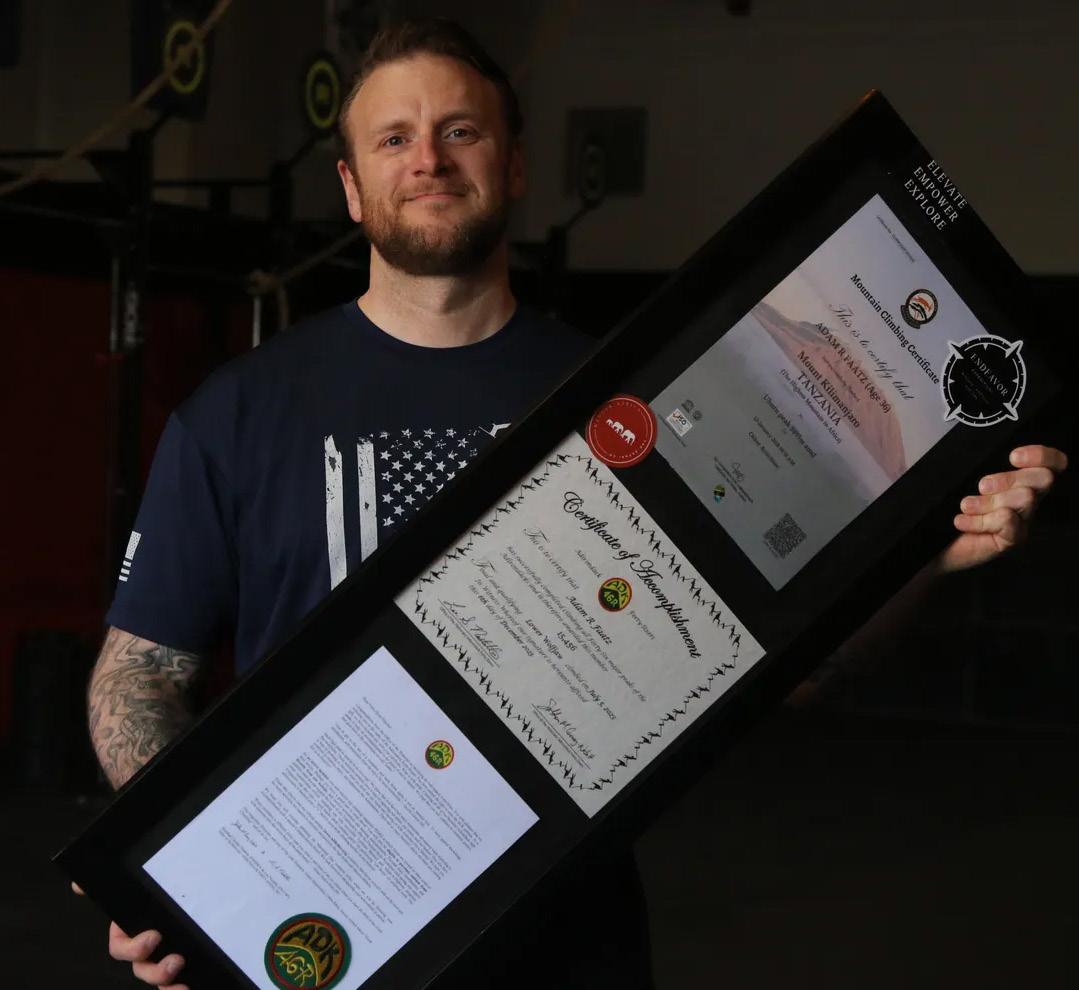
12 Better Breathing

Occupational Respiratory Disease
Every year in New Zealand, hundreds of people die and thousands are hospitalised after being exposed to harmful contaminants at work. For ‘World Safety & Health at Work Day’ on Sunday 28 April, we take a look at what the common asthma triggers are at work and what you can do to protect yourself.
What is occupational respiratory disease?
Lung cancer, asthma, and chronic obstructive pulmonary disease (COPD) are all examples of occupational respiratory diseases that can be caused by long-term exposure to airborne toxins at work.
These exposures are one of the main causes of work-related mortality in New Zealand, accounting for about 250 deaths per year.
Sometimes symptoms don’t develop until some hours after the exposure, so it is, therefore, often difficult to identify a workplace as the cause.
Other people develop asthma for the first time in the workplace after heavy exposure to irritants of the breathing tubes, such as welding fumes or gaseous vapours, like sulphur dioxide - it may even happen years after working safely with a substance. The prevalence of occupational asthma is higher in smokers.
What are some common New Zealand workplace triggers?
• Wood dusts
• Flour and grain dusts from farms, granaries, and bakeries
• Animal fur and protein from laboratories and veterinary clinics
• Foams and plastics, and the fumes given off during their manufacture
• Isocyanate paints
• Epoxy resins and other plastics from boat builders, mould manufacturers and plastic manufacturing processors
What can you do?
Talk about the problem with your healthcare practitioner or the occupational health nurse
if one visits your workplace. Your healthcare practitioner will ask you to note what substances or processes you are exposed to in your work, if your symptoms worsen during each shift, or if there is any improvement away from work.
They can also teach you how to use a peak flow meter. This measures how fast you can breathe out and tells you how well your airways are working. Taking readings at work and at home can help determine if the issue is workplace-related.

If a workplace process or substance is causing or making your asthma worse, there are several steps that you can explore with your employer to lessen the problem. They are:
• Elimination: Can the substance or process be changed for something less harmful?
• Isolation: Can the substance or process be isolated to a special place in the worksite or time of day when most people will not be exposed?
• Minimisation: Can the equipment be improved to reduce the exposure?
WorkSafe New Zealand can be contacted for advice. They have resources to provide information and advice about workplace hazards and the best (and most practicable) means of controlling these problems if they exist.
Better Breathing 13
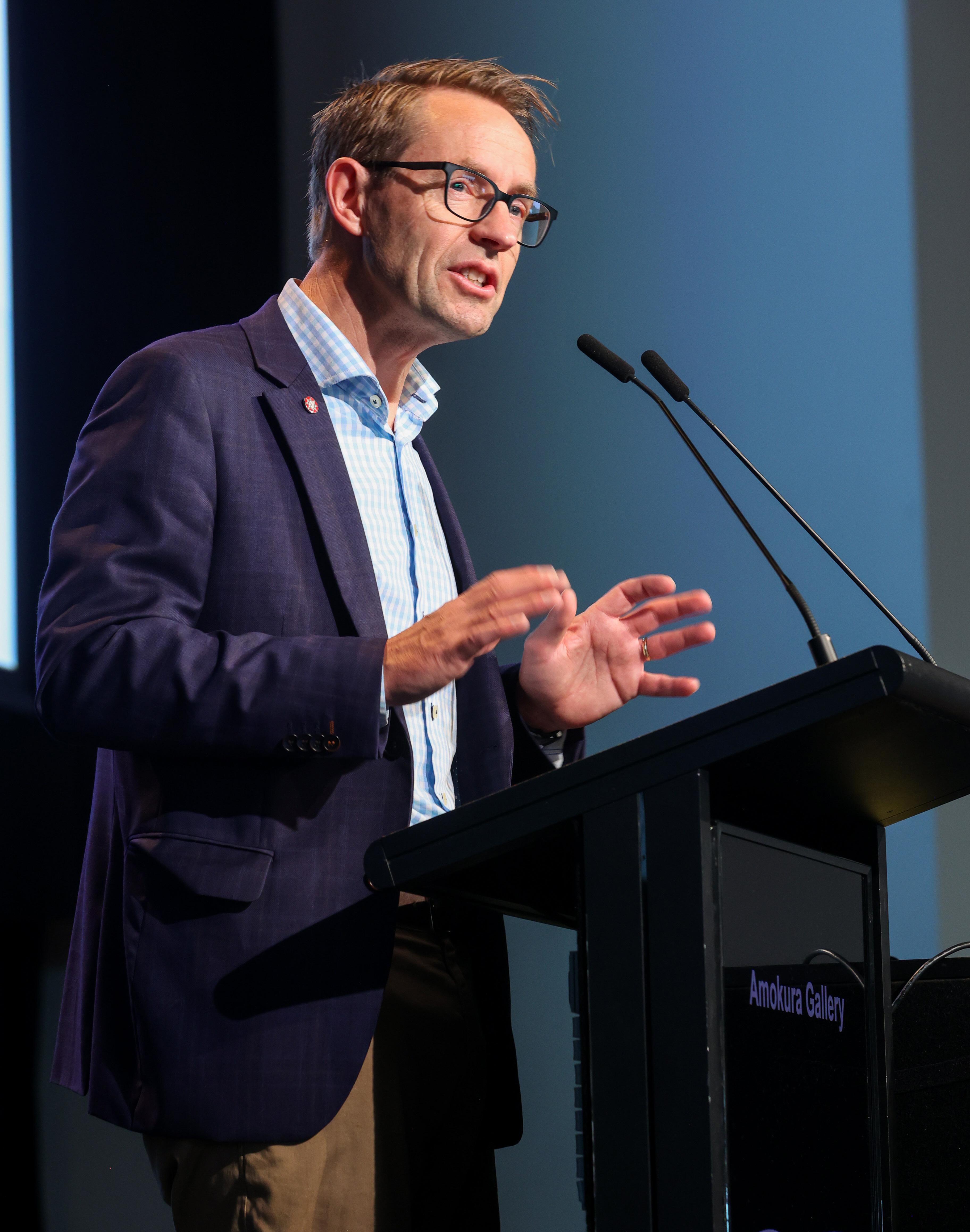

Thank you to all our sponsors and exhibitors: AstraZeneca, GSK, Pharmac, Breathing & Medical, Pharmaco, Boehringer Ingelheim, Fisher & Paykel Healthcare, McLaren Medical, Rex Medical, MSD, Apex Medical, Research Review NZ, He Ako Hiringa, Dyson, DVS Home Ventilation, Lotteries National Community Grant and Pub Charity.





14 Better Breathing
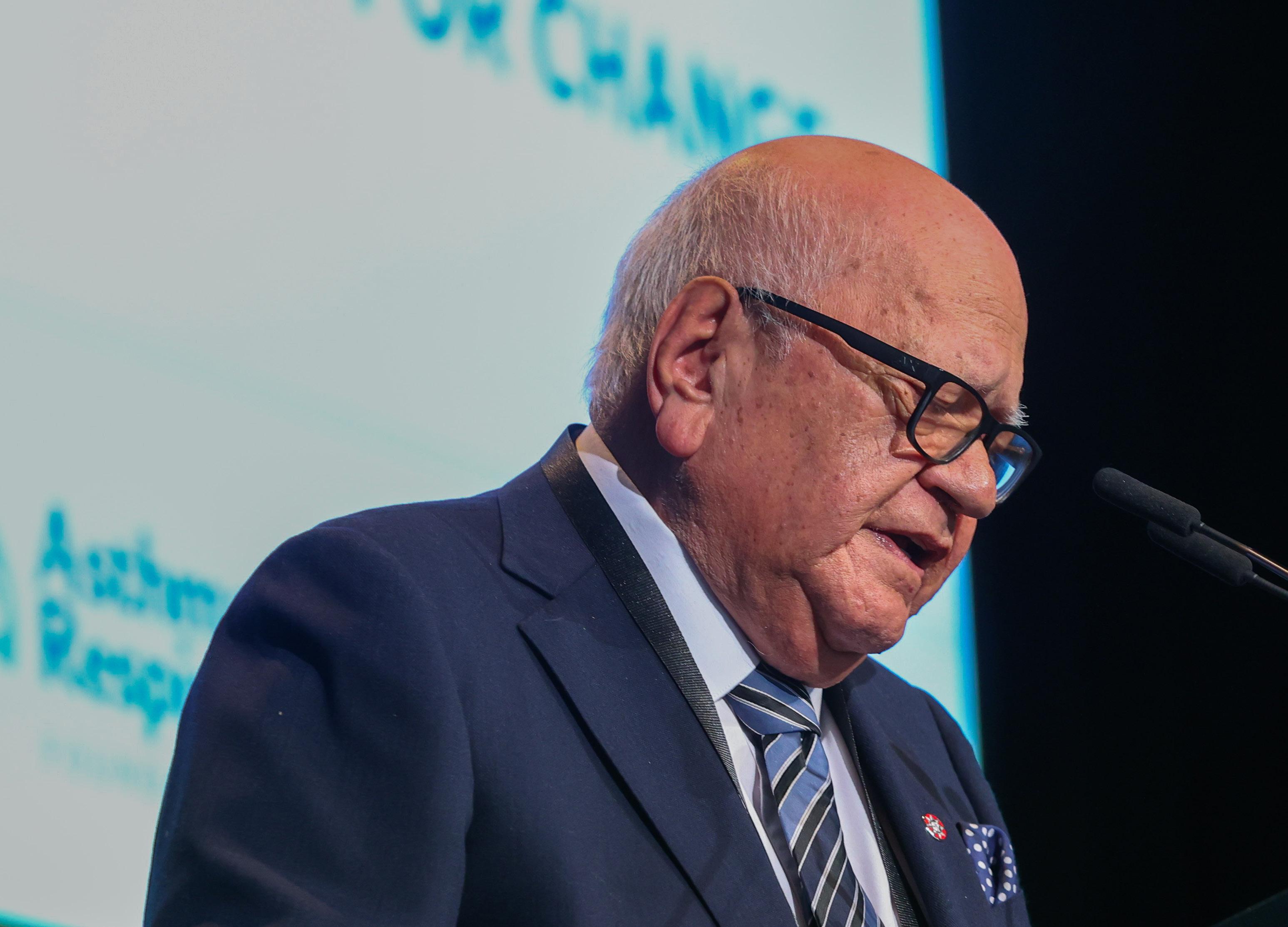

What an incredible two days at New Zealand Respiratory Conference last November in Wellington. We’d like to thank our esteemed speakers for their invaluable knowledge and insights in the field of respiratory health.
The engaging discussions sparked by these speakers not only deepened our understanding of respiratory health, but inspired collaborative efforts to address challenges communities are currently facing.
To those who attended each and every session –thank you for joining us and for contributing to the conference's vibrancy.
And, last but not least, a special thanks to our sponsors, whose generous support made this conference possible. Their commitment to the respiratory health sector - and their belief in the importance of knowledge exchange - contributed significantly to its success.
See you in 2025!




Better Breathing 15
WEAVING A STRONG FUTURE FOR RESPIRATORY HEALTH
Wools of New Zealand are proud to become the newest Gold partner of the Asthma and Respiratory Foundation NZ




woolsnz.co.nz
TM

























































